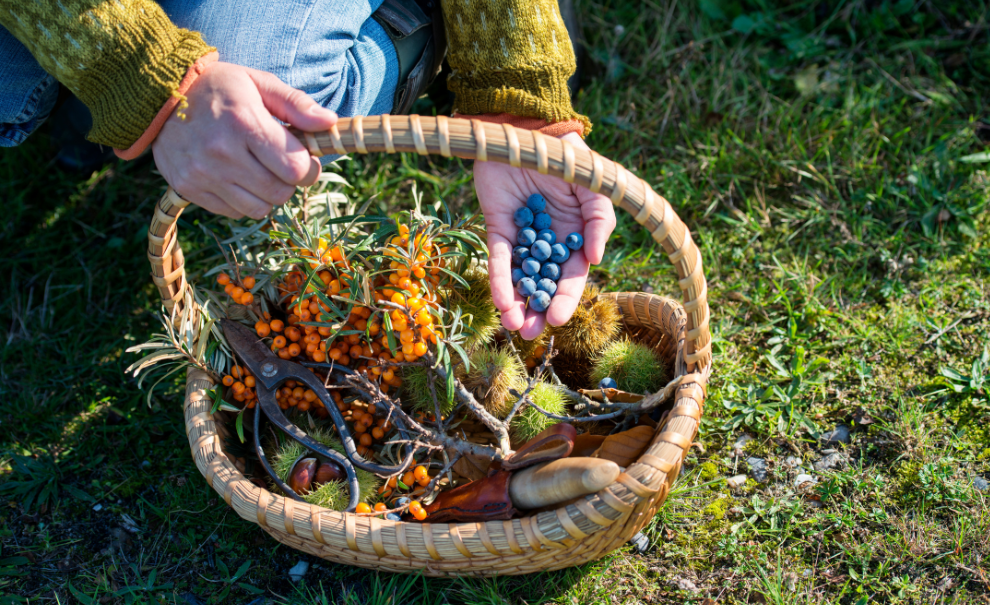Westerly Sun Column | So You Say You Want To Be a Food Forager
September 30, 2024

If you asked me a few years ago to name a luxury food item, I would have said something like “caviar” or “truffles.” These days, my idea of a splurge is cream cheese to go with my bagel. A small part of me dies each time I have to purchase eggs. I may have to take out a second mortgage on my home to support my kids’ raspberry habit. Unfortunately, we can’t count on the price of groceries going down any time soon, but perhaps we can turn to our own backyard to help ease the burden. Not only does nature have a positive impact on your mental health, it’s also full of edible plants that won’t cost you a penny!
Now, I obviously don’t recommend that you run outside and start gnawing down on the first berries or leafy greens you happen upon. There are plenty of plants that will NOT have a positive effect on your mental or physical health, but we have a number of great books at the library to help you determine which are which. “276 Edible Wild Plants of the United States & Canada” by Caleb Warnock and “Sam Thayer’s Field Guide to Edible Wild Plants” are fantastic reference guides for both novices and experienced foragers. Full of high-quality photographs, they include detailed descriptions of wild berries, nuts, greens, and flowers, as well as information on telling them apart from their poisonous doppelgängers. “Mushroom Wanderland” by Jess Starwood is another guide that focuses on 25 species of wild fungi, offering detailed accounts of the nutritional profile and medicinal properties, and sample recipes for each.
The recipes — for me — are the best parts of these books. “The Wild Table: Seasonal Foraged Food and Recipes” by Connie Green and Sarah Scott is a beautiful cookbook with mouthwatering recipes such as Mushroom Soup with Wild Mushroom and Herbed Ricotta Tartines, or Maitake Bread Pudding. “Forage, Harvest, Feast” by Marie Viljoen is another cookbook full of creative and delicious ideas for using plants like fiddleheads, ramps, dandelions and wild garlic. If you want to enjoy your foraged bounty year-round, you can also check out “Wildcrafted Fermentation” by Pascal Baudar, which provides step-by-step instructions on delicious ways to preserve the fruit of your labor.
If you’re still a bit hesitant to feast on plants that you’ve found outside, or if you want to learn more about wild edibles you can find this time of year, don’t miss our presentation by the 3 Foragers this Thursday at 6 p.m. in the library’s auditorium. Hailing from southeastern Connecticut, the 3 Foragers are a family that has been foraging, photographing, and cooking edible plants for nearly two decades, and they’ll give an informative and educational presentation that will help you learn to do the same. They are even bringing a few of their seasonal goodies for the audience to taste! This presentation, just like the plants outside, is completely free, so don’t miss out!
by Cassie Skobrak, Adult Services Librarian








